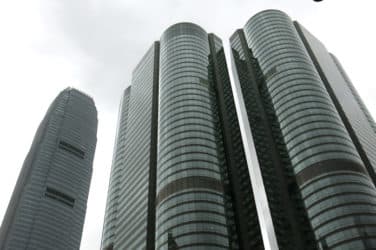With much of the opaque $700 trillion swaps market set to be shoehorned by regulators into centralized clearing and eventually exchange-like venues, exchanges themselves appear to be the likely winners in this new derivatives landscape.
But this is not how the present incumbents—such as the big investment banks that act as dealers by pricing and trading swaps—view it.
“Exchanges may not necessarily be the winners,” a London-based source familiar with the matter told Markets Media. “The banks hold the cards at the moment and why should this situation change?”
The overhaul by regulators on both sides of the Atlantic, in line with the G20 commitments to reduce risk and increase transparency to the shadowy private sphere of the OTC derivatives markets, will likely see swap execution facilities in the U.S. and the European equivalent of organized trading facilities take hold as the way to trade the more standardized swaps. The more esoteric and less liquid derivative contracts are set to remain OTC but with more onerous conditions attached.
The swaps industry has lobbied hard against the move to bring swaps trading into the full glare of the electronic world and many—including the inter-dealer brokers who have traditionally matched swap buyers and sellers over the phone—want to see some element of human intermediation kept to prevent disruption to a complex market. Under the Dodd-Frank rules in the U.S., voice broking will still be permitted as long as the trades are to be matched electronically.
The big inter-dealer brokers, who will possibly run the new swap venues of the future and who also have much to lose in this new environment, are either launching or have launched hybrid platforms but the new environment will likely lead to diminished profits as new entrants—who will potentially bring more competition and also greater price transparency—look for a slice of the action.
Exchanges are, thus, stepping in to capture much of this business—the OTC markets are 10 times the size of the exchange-traded derivatives sector—and are trying to circumvent ways of having to set up as registered swaps dealers, as mandated by the new regulations, and avoid the extra costs involved, such as higher margin requirements, by offering swap agreements as futures contracts.

Philippe Carré, global head of client connectivity, SunGard
“A lot of the volume will move from OTC to listed,” Philippe Carré, global head of client connectivity at SunGard’s capital markets business in London, a trading technology firm, told Markets Media.
“Exchanges are lining up to take advantage of that and there are a lot of initiatives in play. But the key is will the large inter-dealer brokers—the guys who have a lot to lose—let that happen or will they take the liquidity and knowledge they have and create exchanges themselves?”
Swaps and futures have much in common. Both are used to hedge risks although futures have standardized terms to facilitate liquid trading and price discovery and are almost always traded on exchange. Swaps, though, which are privately negotiated, grew out of a commercial need in the 1980s to customize these trades and have grown rapidly in popularity.
“I don’t believe that every swap is going to look like a future,” another London-based source familiar with the matter told Markets Media. “Clearly new products are going to come out that are going to look more like futures than they do today but equally there will be bespoke products that will be traded as bespoke products and will stay off the central limit order book.”
However, as swaps have become more integral to the financial system, they have become more standardized and are now like futures contracts in many instances.
“It is definitely heading in this direction,” said Carré at SunGard. “I do think fundamentally there is a new normal being created [where a lot of swaps will look like futures]. In two years time, this may be how everything is traded.”
And this is why exchange operators such as CME Group, IntercontinentalExchange, Eris Exchange and NYSE Liffe are all beginning to offer swap-like products as futures contracts.
“While the odds seem stacked in favor of the futures market stealing at least some business from the swaps market, it should be remembered that the incumbent always has an advantage, no matter how unfavorable things may appear,” said Adam Sussman, an analyst at Tabb Group, a capital markets consultancy.
“Any new trading instrument has a steep hill to climb to become an established alternative to the swaps market. Exchanges must work hard to get market makers to agree to post bids and offers at a reasonable spread. But eventually, investors need to show an interest in the contract or it will be consigned to the graveyard of failed contracts.”





